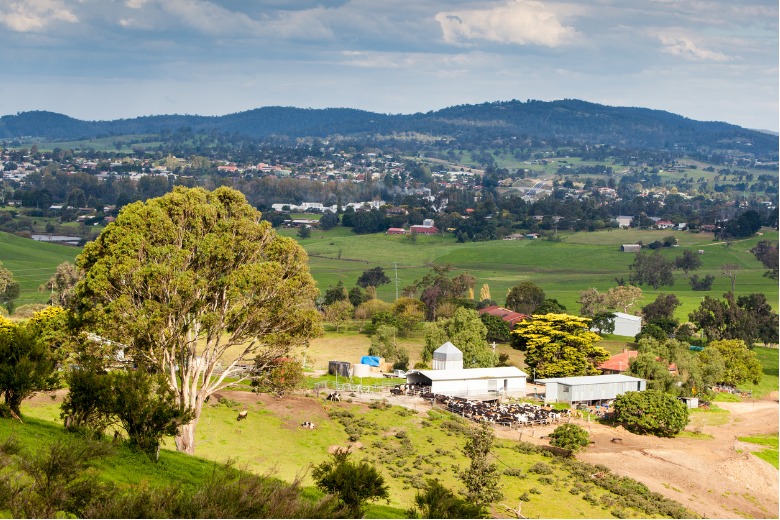
Every time Temora Shire Council’s economic development manager Craig Sinclair sees a funeral he gets worried.
“I get concerned every time I see a funeral because I think ‘we have to work a bit harder’” to keep the population up, he told a recent webinar on housing in regional Australia.
That’s because just a few years ago Temora’s population, currently at 6,300, was predicted to be on a downward spiral.
But like many regional centres, the NSW Riverina LGA is showing signs of healthy growth. And like many regional centres, it’s facing a significant housing pressure.
Regional Australia bearing the brunt
Eliza Owen, head of residential research at property data company CoreLogic Australia, says Australia has experienced strong housing market growth coming out of covid.
“Regional Australia has recently borne the brunt of some of the affordability and pressures that have come along with that,” she told the Regional Institute of Australia webinar last week.

Ms Owen says there’s been an increase in the number of people arriving to regional Australia from capital cities, but that’s been accompanied by a drop in people leaving.
After “plummeting” in 2020, new listings are on the rise again but stock remains depleted, with 60,000 regional listings compared to an average of 100,000 over the last five years.
There’s also been a strong lift in sales, with the result that sales are outstripping properties listed.
This has accelerated price increases across regional Australia, Ms Owens says, with regional dwelling values increasing 13 per cent over the last 12 months – more than twice that across capital cities.
Properties are being snapped up by those who are able to work remotely.
Affordability appeal
“The affordability appeal comes from people in capital cities,” Ms Owens says.
“Exacerbating affordability constraints even further, is that the kinds of people who can access remote work tend to be in the knowledge economy and on higher incomes.
“So when they see they can get more bang for their buck … they can create more displacement for locals.”
There’s also been an increase in rental values across regional Australia accompanied by a reduction in rental stock and rental time on market.
In regional centres like Bunbury, the Gold Coast and the NSW Hunter Valley rental stock has almost halved, Ms Owens says.
Council takes control
Mr Sinclair, from Temora Shire, says median house prices have increased 63 per cent over eight years and the area is also facing a shortage of stock.

It also has significant amounts of undeveloped land, lack of developer capability and an ageing population that is following national trends of preferring to age in place homes.
Demand for housing is high and has increased in the last few months, he says.
Mr Sinclair outlined some of the initiatives councils is taking to encourage development and solve the housing problem.
- Do your research. Temora engaged an external research agency to look at the five year jobs outlook and investment pipeline to understand future planning needs
- Get talking. Council launched a “propaganda parade” and held “boom time forums” with developers to talk about opportunities and encourage investment
- Become a developer. Temora became involved in the development of the Airpark Estate at the local airport
- Buy land for affordable housing: Council has purchased former department housing land and is working with an affordable housing specialist to tap into financing schemes
- Leverage the community. A temporary housing register has been established asking for spare rooms and granny flats to accommodate workers constructing a local solar farm
- Incentives for developers. Temora is in the process of adopting a development infrastructure deferred payment policy, which means developers will be able to repay costs of council owned infrastructure like roads drainage and sewer when lots are sold or within ten years
- Be proactive. Temora takes a lead in inviting talks with landowners of undeveloped land, incentivising businesses to relocate to industrial areas to free up brown field developments, and identifying redevelopment opportunities
Beyond the aspirational town
Tim Renwick, co-owner of the Independent Builders Network and founder of Push for the Bush says potential tree changers need to be encouraged to look beyond the aspirational towns.
“We’ve got to look beyond the aspirational towns,” he told the webinar.
“We’re not all needing to live in Byron Bay. The local councils need to step up and start informing us where the growth opportunities are, where the jobs are, where the transport is.
“I’d throw the gauntlet out to councils and say ‘sell yourselves’. Give clarity to people that are moving to country towns there are jobs here, there’s land available, and we’ve got real estate or builders who are available to build.”
Comment below to have your say on this story.
If you have a news story or tip-off, get in touch at editorial@governmentnews.com.au.
Sign up to the Government News newsletter
For problems to be solved those who can solve it need to accept it is a problem. Until the Feds accept that this needs to be fixed by changing policy not much will happen. In the meantime my daughter who wants to work in a country high school cannot even think about it as the cost of rental or purchase is nearly sixty percent of her wages. No political party seems to have a policy to ensure all Australians have access to affordable housing. ie 30% of your income over 25 yrs.